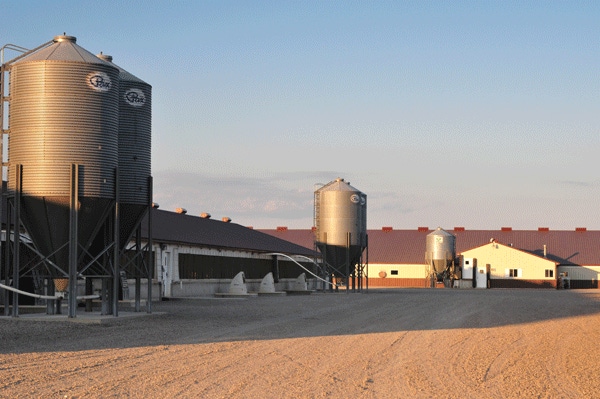February 7, 2014

The pork industry has been given a test with porcine epidemic diarrhea virus (PEDV). A dry run, so to speak, for a foreign animal disease outbreak. Luckily, this test comes without the loss of trade and regulatory actions restricting movement, but it is causing significant animal health and economic consequences to the industry. The PEDV response has highlighted the need for changes to the way producers and veterinarians manage records, diagnostic submissions and health information. That change has to do with consciously and consistently using premises identification numbers (PINs) on veterinary diagnostic laboratory forms.
History of PIN
Over 95% of U. S. Department of Agriculture (USDA)-estimated pork production sites have been registered for the nationally standardized PIN. This success is a result of a concerted effort by the industry and industry stakeholders at the national, state and local levels to get the job done. The PIN is the cornerstone of a valid pre-harvest traceability system designed to keep U.S. pork producers competitive on an international level, increase the speed and accuracy of disease tracebacks, support emergency response capabilities and improve national disease surveillance programs.
The PIN is a nationally unique number assigned by the USDA’s premises allocator. It is a random, seven-character alphanumeric code. The record associated with it is kept secure by the state where the site is registered. The record contains contact information, address, geospatial coordinates, and/or location descriptors, which provide a verifiably unique location. Although the PIN itself tells you nothing about the site, its use on a diagnostic form still provides a unique site identifier.
PEDV and PINs
As the PEDV event unfolded, it became very obvious that including a PIN on the diagnostic laboratory submission form could provide useful epidemiological information. The PIN lets researchers and diagnosticians differentiate new and repeat case submissions accurately. This designation is valuable when attempting to determine the true number of infected sites.
The value of the PIN to the pork industry can also be more than just an aid during basic tracking of cases. Since the PIN is associated with a record of the site’s location, the laboratory can couple the PIN and test results and share that information securely for aggregate analysis and reporting to help get a better handle on the full scope of the outbreak. Unfortunately, issues early on with confidentiality hindered this. But they can be resolved by producers providing labs permission to allow the sharing of lab results and their PIN to respond to a new or emerging disease.
Insurance for the Industry
PINs are like an insurance policy. If the policy is not in place prior to the event, there is no benefit. Unlike the PEDV outbreak, in the case of a regulatory disease (like foot-and-mouth disease) USDA has the authority to access premises data and require the reporting of cases along with the sites they came from. In either case, the PINs are valuable to the response but, as demonstrated by PEDV, if they are not being included on diagnostic forms and recorded by the diagnostic lab, you are already behind the eight ball.
So What Can Be Done?
It is important to understand that just writing the number on a form is not the best answer to the problem. The copying by hand of a seven-character alphanumeric code is just asking for errors in transposing that could result in inaccurate information being captured. To address this, the pork checkoff has worked with USDA to develop a website (www.pork.org/Programs/881/PremisesVerification.aspx) that allows producers and veterinarians to validate PINs and obtain barcode labels of each PIN entered. Using this process ensures the PIN is valid, plus the label provides an easy way to attach the barcode to forms or include it in the box with the samples, so the PINs can be easily captured at the lab. The issue of granting permission to the veterinary diagnostic laboratory to share test results and PINs is also critical to maximize industry response capabilities. Now, all that’s left is for producers to work with their herd veterinarian to make it happen for the good of the industry today and, more importantly, in the future. We can’t afford not to.
You May Also Like



